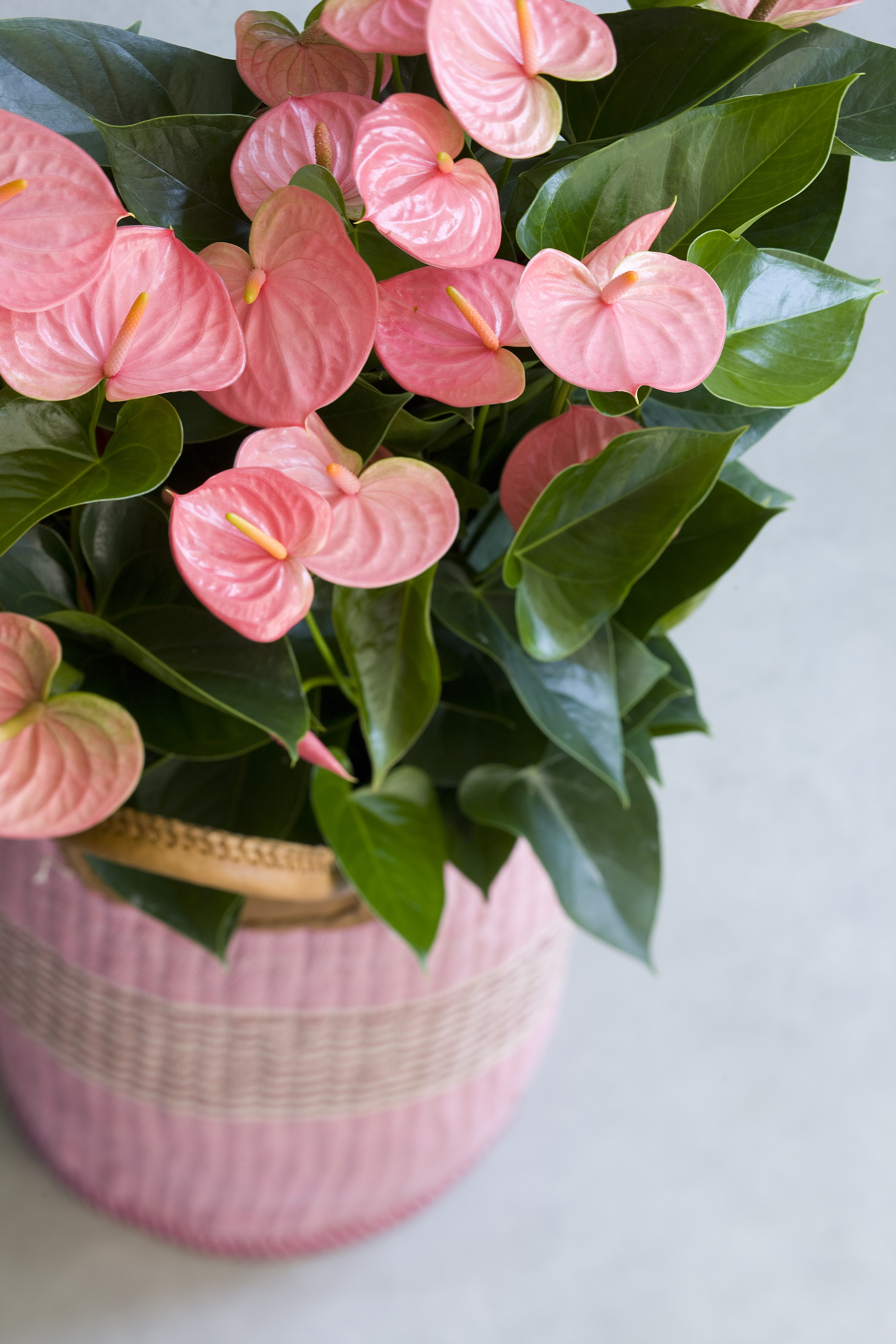

Once the new individual has been placed in a spot that has both high levels of humidity and indirect sunlight, wait for the roots to develop.The trick of the trade is that these plants need a lot of moisture to grow. Fully saturate the soil with water and continue to add moisture every other day so that the top layer of soil does not dry out.This should be about two or three inches deep, with the leaves on top of the soil. Double-check that the cutting is placed into the soil directly.Be sure to check the underside for ample drainage holes. Make a clean incision with pruning shears and put the new cutting into a small pot.Choose a healthy parent plant that you want to duplicate and locate a stem that is at least six inches in length and has two or more leaves attached.
#Purple flamingo plant how to#
Many plant enthusiasts enjoy creating Anthurium hybrids.īelow is a detailed step-by-step guide on how to make a beautiful clone out of your Anthurium specimen. These plants can be propagated through division, seed germination, or cuttings.Īll of these methods are fairly easy, even for a beginner. Pink Waxy Bract as well as Spathe and Spadix Propagate Anthuriums It is what most people think is a flower, but it is not. The bract is waxy and is colored red, pink, yellow, rose or white. The spadix is the tail inside of the flower. Flamingo flowers have a spathe and spadix called a flower or inflorescence. Their large leaves, heart-shaped bracts, and slender clusters of flowers characterize these plants. If your Anthurium is not flowering, read my extensive guide on common issues here.īloom with a visible spathe and spadix.


That being said, not every flower will open all at one time, meaning that you’ll get a prolonged bloom time.Īnthurium enthusiasts agree that there are about three months of flowering and another three months of just large leaves produced by the plant. If you raise your plant in water, the flowers can survive up to six weeks. The flowers themselves tend to last for a few weeks at a time unless cut. Once these plants reach maturity, Anthurium plants generally grow to a height of 1.5 feet (45 cm) and 1 foot in width (30 cm). Read more in my detailed guide about Fertilizer for Anthurium.

Use a fertilizer with an NPK of 10-10-10 or 14-14-14, depending on the light intensity and the species of Anthurium, according to the University of Florida.Īnthurium plants grow best using a well-balanced fertilizer. Read more in the Anthurium humidity guide. Misting is not recommended as it does not increase air humidity and might lead to leaf rot. Placing your plant in the bathroom or close to the kitchen sink, as well as putting plants closely together, helps. Anthuriums indoors need more water compared to growing them outdoors.Ī humidifier can help improve air humidity. Use a fertilizer with an NPK value of 10-10-10 or 14-14-14 once every two weeks in spring and summer and once a month in autumn and winter.Īnthurium crystallinum has remarkable veins on the adaxial leaf side Humidity An ideal humidity level lies between 70-80%. Anthuriums prefer temperatures of 77-92☏ (25-32☌). Water every few days to once a week and keep the soil slightly moist but never soggy. Provide airy, well-draining soil consisting of orchid bark, perlite, coco coir or peat moss, and charcoal. Toxic to animals such as cats and dogs as well as humans. Tailflower, Flamingo flower, Laceleaf, Painter’s palette, Flamingo LilyĪiry, well-draining soil consisting of orchid bark, perlite, coco coir or peat moss, and charcoal


 0 kommentar(er)
0 kommentar(er)
